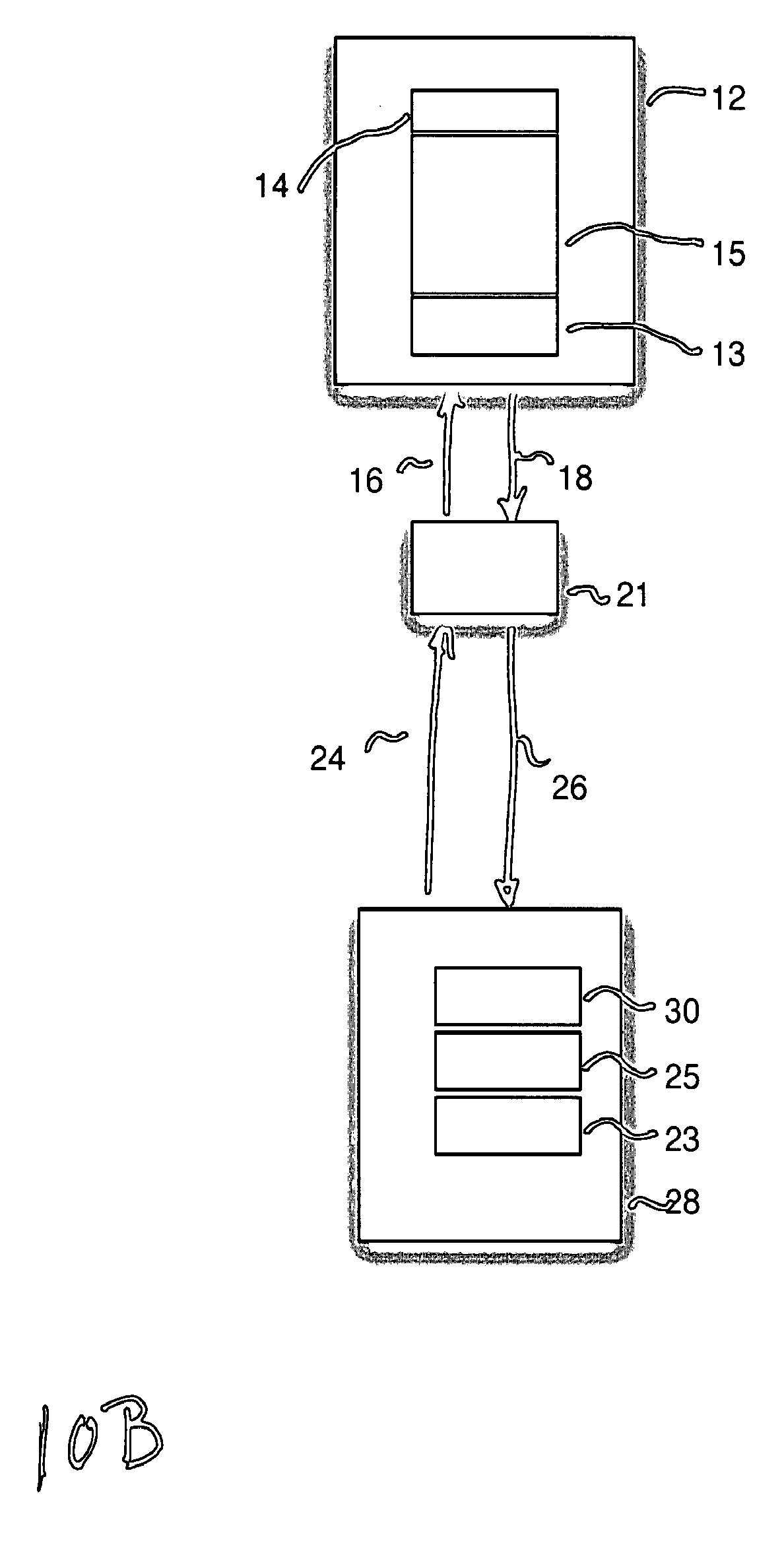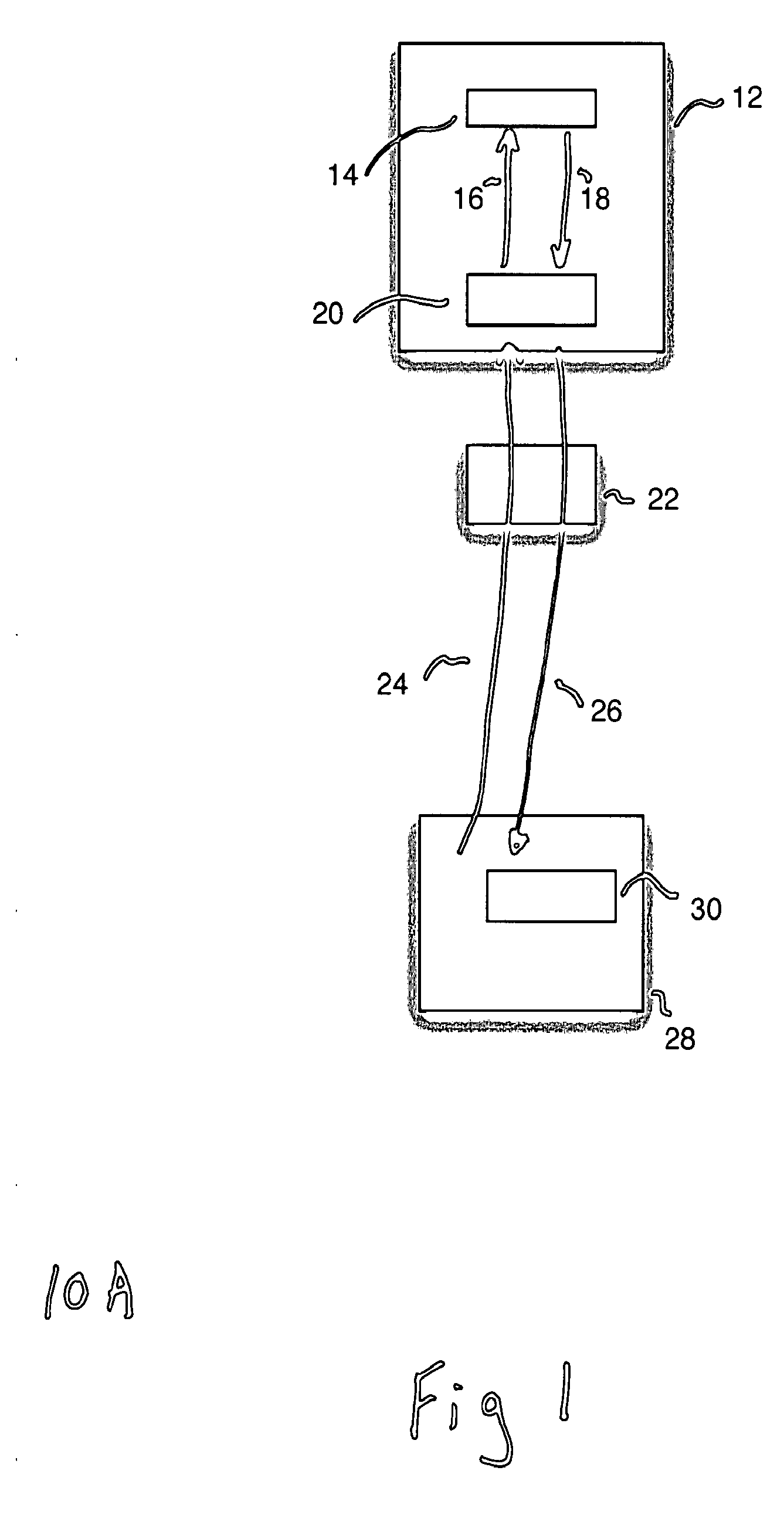Smart jms network stack
a network stack and smart technology, applied in the field of smart jms network stack, can solve the problems of increasing the average latency of message delivery, data distribution methods that rely on network adapters and network switches do not understand application-level addressing such as subjects or topics, and achieve the effects of reducing CPU utilization, ultra-low latency, and extra protocol layers
- Summary
- Abstract
- Description
- Claims
- Application Information
AI Technical Summary
Benefits of technology
Problems solved by technology
Method used
Image
Examples
Embodiment Construction
[0020]Note: numbers used in the Figures are repeated when identifying the same elements in various embodiments.
[0021]Referring to FIG. 1, one embodiment of the invention is graphically depicted. A server 12 with a server application 14 receives Topic open requests / initial value requests 16 from and transmits initial values / updates 18 to a Controller 20. The Controller 20 by means of IP (Internet Protocol) and a switch 22 communicate to at least one Client application 28, where said Client application has an API, and transmits Topic subscriptions 24 to the Server and receive initial values and updates 26 in return.
[0022]The invention provides a Controller 20—Topic-aware network hardware—that implements interest-based message routing of Java Message Service (JMS) Topic messages between a server application (Server) and one or more client applications (Client). In the embodiment depicted in FIG. 1, the Controller is some type of network adapter containing logic to accomplish subscript...
PUM
 Login to View More
Login to View More Abstract
Description
Claims
Application Information
 Login to View More
Login to View More - R&D
- Intellectual Property
- Life Sciences
- Materials
- Tech Scout
- Unparalleled Data Quality
- Higher Quality Content
- 60% Fewer Hallucinations
Browse by: Latest US Patents, China's latest patents, Technical Efficacy Thesaurus, Application Domain, Technology Topic, Popular Technical Reports.
© 2025 PatSnap. All rights reserved.Legal|Privacy policy|Modern Slavery Act Transparency Statement|Sitemap|About US| Contact US: help@patsnap.com



